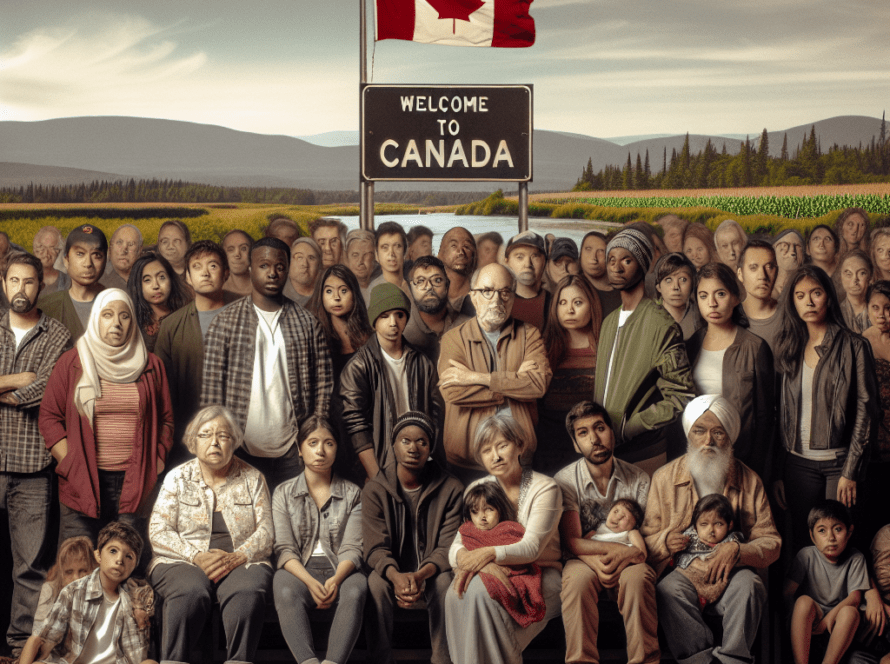Canada’s 2024 Immigration Hits Historic Highs

Canada’s Ambitious Immigration Goals for 2024: A Path Towards Multicultural Growth
As 2024 approaches, Canada is poised to welcome over 475,000 new permanent residents, marking a significant milestone in its immigration policy. This influx is not merely about numbers; it represents a strategic move to address economic needs, labor shortages, and demographic changes within the nation. As one of the most immigration-friendly countries in the world, Canada continues to set ambitious targets that will shape its multicultural future.
Why Canada Is a Magnet for Immigrants
Several factors contribute to Canada’s appeal as an immigration destination:
-
Economic Immigration Programs: Federal and provincial initiatives, such as the Provincial Nominee Program (PNP) and the Atlantic Immigration Program (AIP), account for nearly 68% of new permanent residents. These programs are tailored to meet local labor market demands and encourage newcomers to settle in regions that require their skills.
-
Addressing Labor Shortages: Canada faces critical shortages in sectors such as healthcare, technology, construction, and renewable energy. Targeted immigration pathways are essential in filling these gaps, ensuring that the economy remains robust and competitive.
-
Inclusive Policies: Canada’s commitment to diversity and inclusivity attracts individuals and families from around the globe. The nation’s welcoming stance fosters a sense of belonging, making it a desirable place for newcomers.
- Regional Distribution: The immigration landscape is not uniform across the country. Provinces like Ontario, British Columbia, and Alberta are set to receive the highest numbers of new immigrants, while initiatives such as the Rural and Northern Immigration Pilot (RNIP) aim to distribute newcomers equitably, benefiting smaller communities as well.
Provincial Insights: Where Will Immigrants Settle?
The distribution of new immigrants in 2024 highlights a clear trend:
- Ontario: 200,000+ newcomers, with thriving tech hubs in Toronto and Ottawa.
- British Columbia: 75,000 immigrants, known for its tech, healthcare, and green sectors.
- Alberta: 56,430 newcomers, strong in oil, gas, and emerging tech.
- Quebec: 50,450, with a focus on Francophone immigration.
- Manitoba: 21,910, emphasizing agriculture and healthcare sectors.
- Saskatchewan: 20,690, attracting those seeking affordable living and skilled job opportunities.
Each province has tailored immigration programs to fulfill local needs, ensuring that the benefits of immigration extend beyond major urban centers.
A Look Ahead: Canada’s Immigration Strategy Beyond 2024
While 2024 marks a peak in immigration numbers, projections for 2025 suggest a reduction to approximately 395,000 newcomers. This recalibration aims to enhance rural immigration, focus on key industries like healthcare and technology, and expand pathways for international students and skilled workers.
This strategic shift reflects Canada’s commitment to sustainable growth, ensuring that the benefits of immigration are realized both economically and socially.
Conclusion: Embracing the Future with Open Arms
Canada’s immigration strategy is a cornerstone of its economic and social fabric. With a clear focus on skilled labor and inclusivity, the nation is not just inviting newcomers but is also actively investing in their success. For those considering Canada as their new home, the 2024 immigration landscape presents unprecedented opportunities to contribute to and thrive in a welcoming and diverse society.
As Canada prepares to embrace a new wave of immigrants, it remains a testament to the power of diversity in shaping a prosperous future. Whether you are a skilled worker, an international student, or a family member hoping to reunite, the time to explore what Canada has to offer is now.



